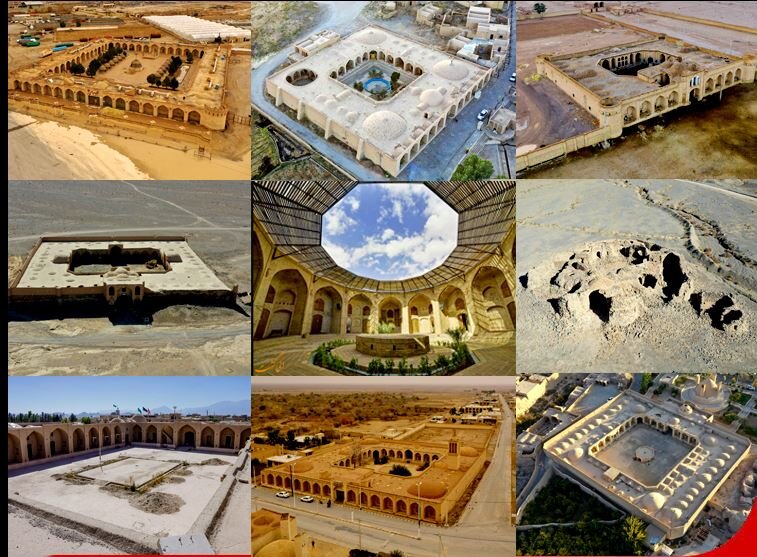Yazd caravansaries weighed for collective UNESCO tag

TEHRAN- A select of nine caravanserais, scattered across Yazd province, have been assessed to be a part of a shortlist of Iranian historical caravanserais being prepared for a possible inscription on the UNESCO World Heritage list.
The dossier of nine historical caravanserais scattered across the province has been compiled in order to be added to the list of the Iranian caravansaries to be submitted to UNESCO, provincial tourism chief has said.
The record bears all-inclusive details of documentation, land surveying, historical investigations, Seyyed Mostafa Fatemi said.
“Saryazd, Zeineddin, Meybod’s Shah Abbasi, Qaleh Khargushi, and Kermanshahan are among the selected caravanserais each characterizing a distinctive feature… for instance, Zeineddin is the only circular caravanserai in the province or Saryazd is considered as the biggest caravanserai complex.”
Last year, the tourism ministry announced that Iran is developing a dossier for a selection of its historical caravansaries for a possible inscription on the UNESCO World Heritage list.
In this regard, cultural heritage experts are assessing such monuments that are scattered across the country to make a shortlist in terms of their architecture, historical and cultural values.
Caravansary is a compound word combining “caravan” with “sara”. The first stand for a group of travelers and sara means the building. They often had massive portals supported by elevated load-bearing walls. Guest rooms were constructed around the courtyard and stables behind them with doors in the corners of the yard.
Iran’s earliest caravanserais were built during the Achaemenid era (550 -330 BC). Centuries later, when Shah Abbas I assumed power from 1588 – to 1629, he ordered the construction of network caravanserais across the country. For many travelers to Iran, staying in or even visiting a centuries-old caravanserai, can be a wide experience; they have an opportunity to feel the past, a time travel back into a forgotten age!
In July 2017, the historical structure of the city of Yazd was named a UNESCO World Heritage. Wedged between the northern Dasht-e Kavir and the southern Dasht-e Lut on a flat plain, the oasis city enjoys a very harmonious public-religious architecture that dates from different eras. Yazd is usually referred to as a delightful place to stay, or a “don't miss” destination by almost all of its visitors. The city is full of mudbrick houses that are equipped with innovative badgirs (wind catchers), atmospheric alleyways, and many Islamic and Iranian monuments that shape its eye-catching city landscape.
ABU/AFM
Leave a Comment